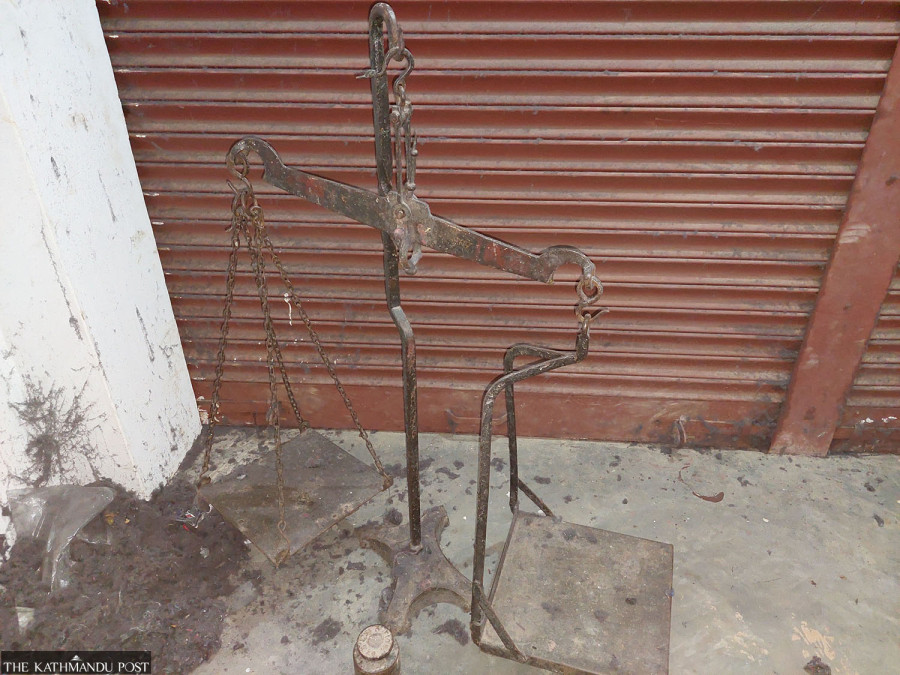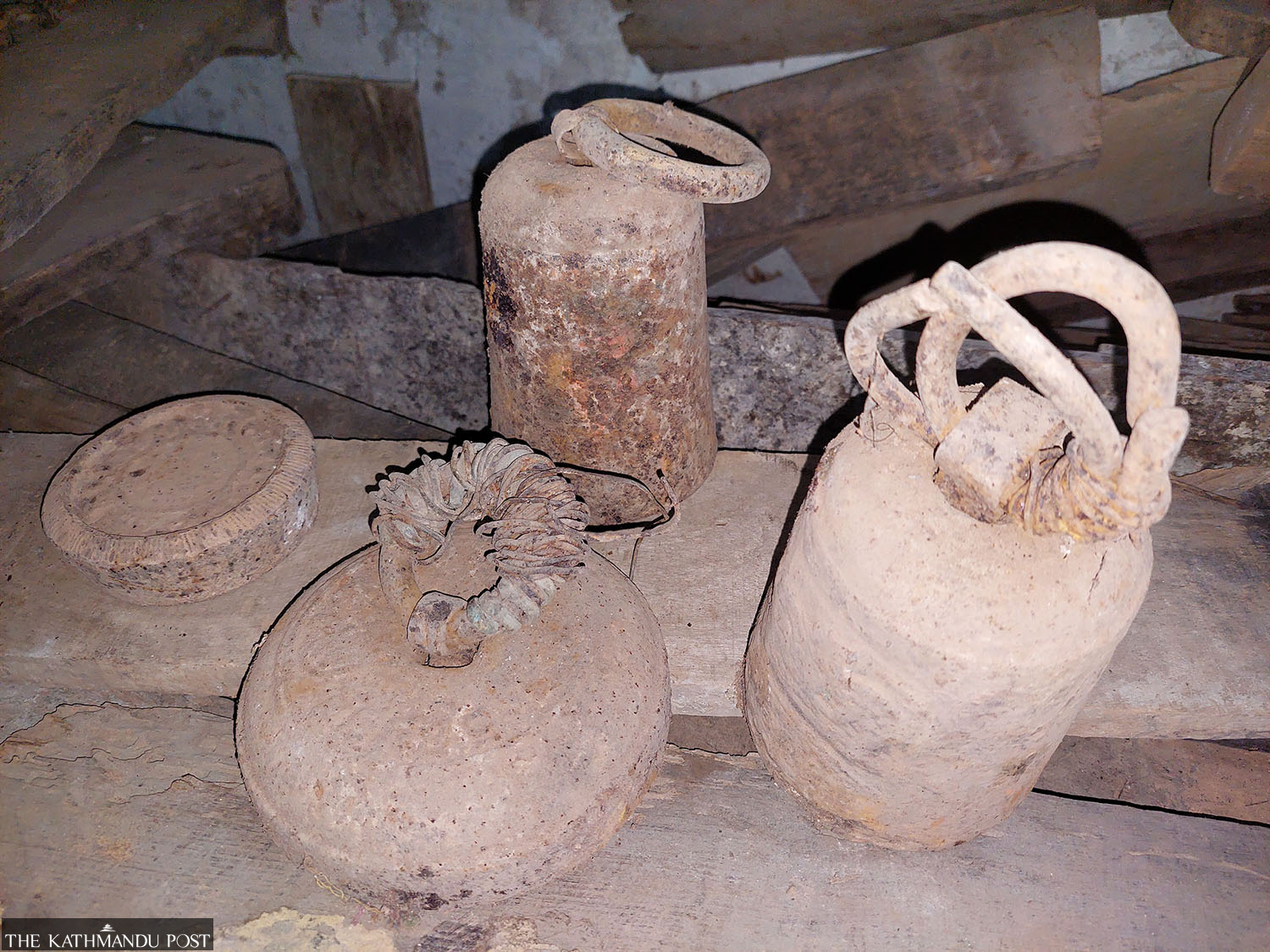Culture & Lifestyle
Weighing changes in the Tansen market
Business owners of Palpa reminisce about traditional weight measuring tools, including dhak and taraju.
Madhab Aryal
Hari Prasad Shrestha, a resident of Bhagwati Tole, Tansen Municipality Ward 3, Palpa, has preserved the ghee heating karai (cauldron), dhak, and taraju (weight balances) used during his father’s time. Shrestha’s father used the traditional weighing scale until new technology took over, and before that, his grandfather used mana, pathi, dharni, and bisauni for weighing.
“If I remember correctly, a new form of weighing scales started emerging in the late 80s,” says Shrestha. His father, Tika Bahadur, was a big businessman in Tansen back then. After Tika Bahadur’s death, Hari Prasad briefly sold foodgrains, and about three years later, he started a garment business.
At the time, Tansen was filled with foodgrain stores—known locally as galla. They could be found across the Tansen bus park, Narayansthan, Silkha Tole, Bhagwati Tole, Makhan Tole, Ason Tole, Kailash Nagar, and Basantapur, all operated by the Newas inhabiting the area. These stores all used dhak and taraju to weigh the goods.
“The dhaks and tarajus used at the time were imported from India,” says Hari, another veteran trader from the locality, adding that eventually, these weighing tools started being produced in Nepal too. These old tools are easily recognisable and can be seen in many houses around Tansen, but as they haven’t been used for a long time, they are down with rust and in an unusable state.
“Traditional dhaks and tarajus aren’t seen anywhere these days. Even the sellers who trade in manas and pathis in their villages have to sell their goods in kgs here,” says Chandrika Prasad Simagaida, a veteran trader from Tansen Ward 5 Kailash Nagar. He remembers his father buying things for Rs5 per mana, but these days trades are made exclusively in kg.

Writer and historian Nirmal Shrestha has also kept a pair of these tarajus and dhak, built in the 60s, in his house. He reveals that while a majority of houses in Tansen have these measuring tools, some sold them. He further pointed out that as electrical weighing tools are more convenient and easy to use these days, business owners prefer them to traditional tools.
Tansen has been a business hub for a long time. People used to carry rice, salt, spices, and soap all the way from Butwal back then. Many businessmen used mules to transport their goods. In the mid-1960s, transportation routes from Batauli, Butwal to Indian markets started. According to businessman Chandrika Prasad, village markets used manas and pathis for measurement, while markets in cities used dhaks and tarajus.
As road routes developed, kg started displacing mana, pathi and dharni as units of weight measurement. After the Rana regime, the usage of kg flourished. Although cities had adapted to the new measurement system, the villages were still stuck in time, says historian Shrestha.
“For years, people coming from rural areas had a lot of difficulties adapting to the new system in the market as they could not understand the way of accounting,” he explains. The goods they brought had to be negotiated in a way they could understand. But over the years, the units of weight measurement and the tools used to measure them have changed completely.
“In recent years, the traditional dhak and taraju have become extinct,” says the chairman of the Palpa Industry and Commerce Association, Shailendra Bhattarai. He suggests we keep these measurement tools in museums and educate the youth about them. Culturist Madan Deurali is also of the same opinion. He believes the only way the current and future generations will know about these tools is if we put them in museums.




 22°C Kathmandu
22°C Kathmandu.jpg)















